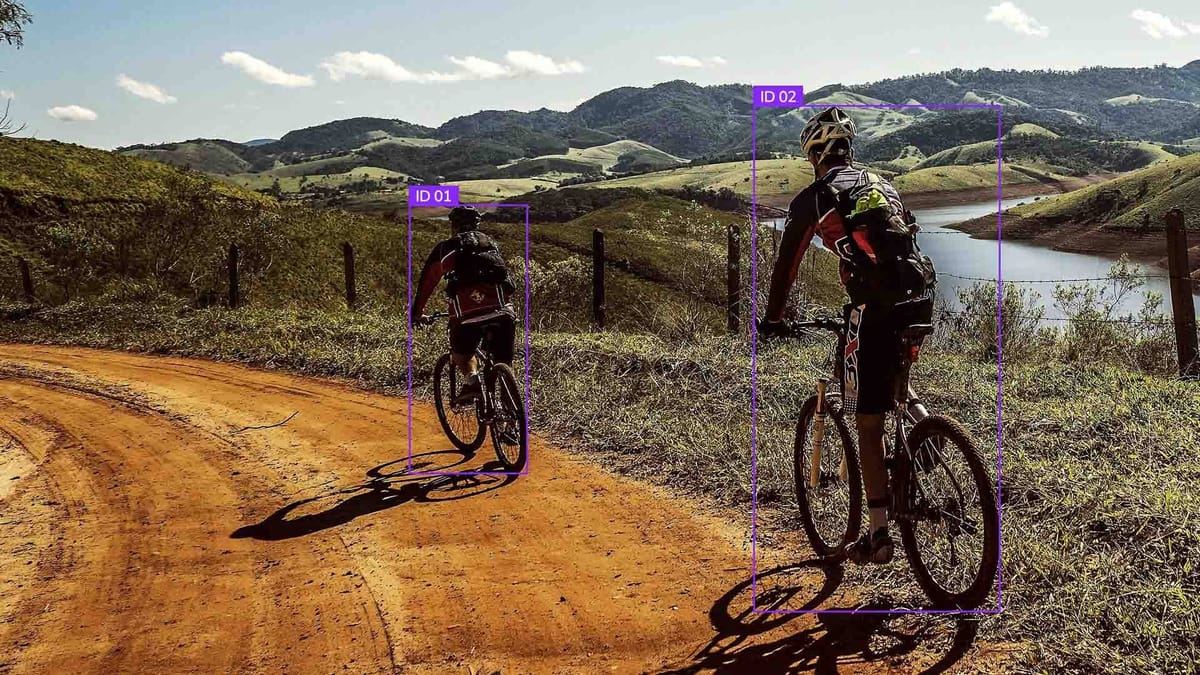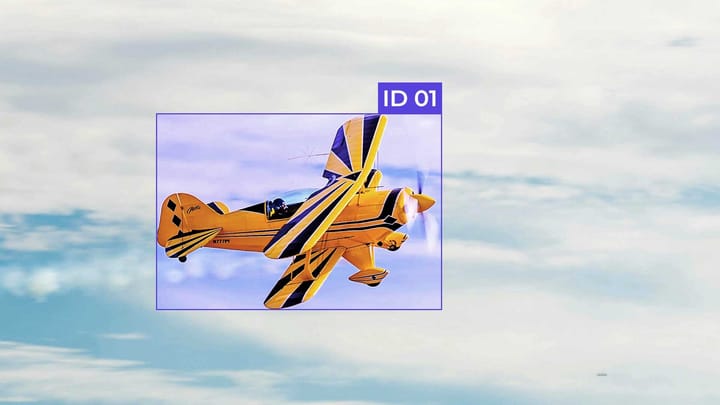Best Tools and Frameworks for YOLOv10

YOLOv10, the latest in the YOLO series, introduces significant advancements in object detection. This guide delves into the top tools and frameworks for leveraging YOLOv10 in deep learning projects. We'll explore essential resources, from PyTorch to TensorFlow, to aid in harnessing this advanced technology.
YOLOv10 brings forth key innovations, such as NMS-free training and a streamlined classification head. It offers variants like YOLOv10N and YOLOv10S, catering to diverse project demands. The model surpasses its predecessors, demonstrating enhanced Average Precision while utilizing fewer parameters.
For applications in autonomous vehicles, surveillance systems, or robotics, YOLOv10's superior performance is invaluable. The YOLOv10-N variant, with a mere 2.3 million parameters, achieves an impressive APval of 38.5% at a latency of 1.84 ms.
Key Takeaways
- YOLOv10 introduces NMS-free training and lightweight classification
- Multiple variants available for different project requirements
- Outperforms previous YOLO models in efficiency and accuracy
- Suitable for various applications including autonomous vehicles
- YOLOv10-N offers high performance with minimal parameters
Introduction to YOLOv10 and Its Advancements
YOLOv10 marks a major advancement in object detection. It leverages the strengths of its predecessors, boosting efficiency and performance. The YOLOv10 architecture excels in real-time detection, ensuring high accuracy. This makes it invaluable for diverse applications.
Overview of YOLOv10 Architecture
The YOLOv10 architecture boasts several enhancements:
- YOLOv10-S model achieves an Average Precision (APval) of 46.3 with input size 640
- YOLOv10-M reaches an APval of 51.1, balancing performance and speed
- YOLOv10-X model attains an impressive APval of 54.4 with a latency of 10.70 ms
Key Improvements Over Previous Versions
YOLOv10 exhibits notable advancements over its predecessors:
- YOLOv10-B has 25% fewer parameters than YOLOv9-C while maintaining performance
- YOLOv10-L outperforms YOLOv8-L by 0.5 AP with a latency of 7.28 ms
- YOLOv10-S is 1.8x faster than RT-DETR-R18 with similar AP value on the COCO dataset
Importance of Choosing the Right Tools and Frameworks
Selecting the right deep learning tools is vital for YOLOv10's optimal performance. The correct framework can greatly influence model performance, training efficiency, and deployment success. When exploring YOLOv10, consider factors like compatibility, processing power, and specific project requirements to select the best tools for your object detection tasks.
Understanding the Foundations of Deep Learning for Object Detection
Deep learning is essential for modern object detection systems. These systems employ neural networks to pinpoint objects within images or videos. The evolution of object detection has been marked by significant advancements, with YOLO (You Only Look Once) at the forefront for real-time applications.
At the heart of object detection lies convolutional neural networks (CNNs). These networks are adept at processing grid-like data, making them perfect for image analysis. They serve as the foundation for various object detection models, including R-CNN, Fast R-CNN, and YOLO.
- Single-shot detectors (like YOLO and SSD)
- Two-shot detectors (such as R-CNN and Faster R-CNN)
YOLO is notable for its efficiency, treating object detection as a regression task. It divides images into grids, simultaneously predicting bounding boxes and class probabilities. This method enables YOLO to operate in real-time, essential for applications like video surveillance and autonomous driving.
Key metrics for evaluating object detection models include:
- Intersection over Union (IoU): Measures bounding box accuracy
- Average Precision (AP): Assesses overall detection performance
Grasping these deep learning basics and object detection concepts is vital for working with advanced models like YOLOv8, the latest in the YOLO series. As you explore neural networks for object detection further, you'll gain the skills to implement and refine these sophisticated tools.
PyTorch: The Preferred Framework for YOLOv10
PyTorch stands out as the leading framework for YOLO implementations. Its simplicity and eager-style execution appeal to researchers and developers focused on object detection. This framework is a top pick for its ease of use and flexibility.
Benefits of PyTorch for YOLO implementations
PyTorch brings several benefits to YOLO implementations. Its dynamic computational graph facilitates easier debugging and supports more flexible model architectures. The framework's intuitive API simplifies the implementation of complex neural networks, such as YOLOv10.
Setting up PyTorch for YOLOv10
To set up PyTorch for YOLOv10, start by installing the latest version and its dependencies. After installation, import the required modules and begin constructing your YOLO model. PyTorch's ecosystem offers tools for data loading, model training, and evaluation, making the development process smoother.
Key PyTorch features for efficient training
PyTorch enhances training efficiency for YOLOv10 through several key features:
- Automatic differentiation for quick gradient calculations
- GPU acceleration for swift computations
- TorchScript for optimized model deployment
- Distributed training support for large datasets
PyTorch's optimization capabilities are noteworthy. The use of the Lite interpreter model for PyTorch Mobile optimization results in inferences about 60% faster than unoptimized versions. This speed is essential for real-time object detection using YOLOv10.
| Model | mAPval50-95 (%) | Parameters (M) |
|---|---|---|
| YOLOv5x | 50.7 | 87.7 |
| YOLOv5m6 | 51.3 | 35.7 |
| YOLOv5n | 28.0 | 1.9 |
With these powerful features, PyTorch empowers developers to craft efficient and precise YOLOv10 models for diverse object detection tasks.
TensorFlow and YOLOv10: Compatibility and Considerations
TensorFlow, a leading machine learning framework, has a complex relationship with YOLO compatibility. It has been a top choice for many computer vision tasks. However, the shift to TensorFlow 2.0 has introduced challenges for YOLO implementations.
YOLOv10, developed using the Ultralytics Python package, delivers outstanding performance with less computational load. Yet, integrating it with TensorFlow demands careful thought. The TensorFlow Lite integration presents a viable solution for running YOLOv10 on edge devices.
- Many TensorFlow 1.x repositories are now abandoned or unmaintained
- TensorFlow 2.0 compatibility may require significant code adjustments
- Performance comparisons between PyTorch and TensorFlow implementations are crucial
For the best results, consider using TensorFlow Lite for YOLOv10 deployment on edge devices. This method can greatly enhance inference speed, with timings as low as 72.0ms per image at a shape of (1, 3, 640, 640).
TensorFlow Lite offers benefits including on-device optimization, platform compatibility, and high performance through hardware acceleration.
To set up TensorFlow for YOLOv10 on platforms like NVIDIA Jetson Nano:
- Update and upgrade system packages
- Install essential dependencies
- Download the appropriate TensorFlow wheel file (version 2.4.0 recommended)
- Install TensorFlow using pip
By navigating the complexities of TensorFlow and YOLO compatibility, you can harness the strengths of both technologies for effective object detection tasks.
OpenCV: Essential Library for Image Processing in YOLOv10
OpenCV is vital for processing images in YOLOv10 object detection. It boasts over 2500 optimized algorithms, crucial for tasks from face detection to 3D modeling. This library is a must-have for numerous applications.
OpenCV's Role in Pre-processing and Post-processing
In YOLOv10, OpenCV excels at both pre-processing and post-processing. For pre-processing, it tackles resizing, normalization, and color space conversion. Post-processing includes drawing bounding boxes and applying non-maximum suppression to remove duplicates.
Integrating OpenCV with YOLOv10
OpenCV's dnn module facilitates running pre-trained deep learning models, including YOLOv10. To integrate OpenCV with YOLOv10, you need Python 3, NumPy, and OpenCV Python bindings. The OpenCV DNN module is tailored for inference, not training.
Useful OpenCV Functions for Object Detection
Key OpenCV functions for YOLOv10 object detection are:
- cv2.dnn.readNet(): Loads the YOLOv10 model
- cv2.dnn.blobFromImage(): Prepares images for input
- cv2.rectangle(): Draws bounding boxes
- cv2.putText(): Adds labels to detected objects
| Task | OpenCV Function | Purpose |
|---|---|---|
| Image Loading | cv2.imread() | Reads image file |
| Resizing | cv2.resize() | Adjusts image dimensions |
| Color Conversion | cv2.cvtColor() | Changes color space |
| Edge Detection | cv2.Canny() | Identifies image edges |
By utilizing these OpenCV functions, you can implement YOLOv10 for effective object detection across various applications.
CUDA and cuDNN: Accelerating YOLOv10 with GPU Computing
GPU acceleration is essential for YOLOv10's performance. NVIDIA's CUDA and cuDNN are key in speeding up object detection tasks. These technologies utilize graphics cards to perform complex calculations at a pace faster than CPUs.
CUDA serves as the backbone for GPU acceleration in deep learning. It offers a platform for parallel computing, backed by the nvcc compiler and CUDA Libraries. Setting up CUDA is crucial for optimizing YOLOv10 for GPU processing.
cuDNN, built on CUDA, optimizes deep neural network operations. It enhances YOLOv10 by accelerating routines like convolution and pooling. Frameworks like PyTorch and TensorFlow use cuDNN to optimize GPU operations automatically.
To enhance YOLOv10 performance with GPU acceleration, consider these key factors:
- Use Python 3.8 or later for YOLOv10 projects
- Ensure PyTorch 1.8 or later is installed
- Verify CUDA compatibility with your GPU
- Monitor crucial metrics during training
- Optimize batch size and learning rate for your dataset
By utilizing CUDA and cuDNN, you can significantly boost YOLOv10's performance. GPU acceleration leads to faster training times and more efficient object detection in real-world scenarios.
| Metric | CPU Only | With GPU Acceleration |
|---|---|---|
| Training Speed | Baseline | Up to 10x faster |
| Inference Time | Seconds per frame | Milliseconds per frame |
| Model Complexity | Limited by CPU | Can handle larger models |
| Scalability | Limited | Easily scalable with multiple GPUs |
Tools and Frameworks for YOLOv10: A Comprehensive Overview
YOLOv10 introduces significant improvements to object detection software. It boasts a 46% latency reduction over YOLOv9 and requires 25% fewer parameters. This makes it essential to select the optimal tools for its implementation. Let's delve into the available options for this advanced technology.
Comparison of Popular Frameworks
Several frameworks are notable for YOLOv10. PyTorch, TensorFlow, and Darknet each bring unique benefits to the table for deploying YOLOv10. Here's a concise comparison:
| Framework | Ease of Use | Performance | Community Support |
|---|---|---|---|
| PyTorch | High | Excellent | Strong |
| TensorFlow | Moderate | Very Good | Extensive |
| Darknet | Low | Good | Limited |
Specialized Tools for YOLOv10 Implementation
YOLOv10 provides a variety of pre-trained models. These include YOLOv10-N, YOLOv10-S, YOLOv10-M, YOLOv10-B, YOLOv10-L, and YOLOv10-X for inference. Each model is tailored to meet different project needs, striking a balance between speed and accuracy.
Choosing the Right Combination for Your Project
Choosing the right tools for your YOLOv10 project hinges on your specific needs. Consider the dataset size, computational resources, and the deployment environment. For custom datasets, YOLOv10 supports training with adjustable epochs, batch sizes, and image sizes.
When evaluating frameworks, consider your team's expertise and project objectives. By meticulously assessing these factors, you'll be well-prepared to leverage YOLOv10's capabilities in your object detection software.
Roboflow: Streamlining Data Preparation for YOLOv10
Roboflow is transforming data preparation for YOLOv10 datasets, offering an efficient and user-friendly approach. It supports a variety of file formats, including JPEG, PNG, MP4, and YouTube videos. This flexibility ensures you can upload your data without hassle.
Ensuring data quality is essential for effective object detection models. Roboflow enhances this by providing pre-processing techniques like resizing and cropping. Additionally, data augmentation methods such as flipping increase dataset diversity, thereby boosting model performance.
Roboflow's auto-annotation feature is a game-changer, utilizing machine learning to expedite the annotation process. For those who prefer manual annotation, outsourcing is available starting at 25 cents per image.
- Set custom train/validation/test ratios (default: 70/20/10)
- Apply image augmentation techniques
- Resize images to specific resolutions
- Export data in formats compatible with TensorFlow, PyTorch, and YOLO
Collaboration is a core aspect of Roboflow, enabling multiple users to work on a project simultaneously. This feature significantly enhances efficiency in team-based projects. Once your YOLOv10 dataset is prepared, exporting it in the necessary format for further analysis and model training is straightforward.
It's crucial to protect your API key generated with the download link to secure your datasets. With Roboflow, preparing data for YOLOv10 is streamlined, allowing you to concentrate more on model development and less on data management.
Anaconda: Managing Python Environments for YOLOv10 Development
Anaconda streamlines Python environment management for YOLOv10 development. It enables you to create isolated workspaces. This ensures your project's dependencies don't interfere with other Python installations on your system.
Setting up a dedicated environment for YOLOv10
To start, create a new environment for YOLOv10. Open your terminal and execute: "conda create -n yolov10 python=3.8". This command establishes a fresh Python 3.8 environment named "yolov10". Activate it with "conda activate yolov10" to begin your project.
Managing dependencies with Anaconda
Anaconda is adept at managing package dependencies. Install YOLOv10 requirements effortlessly with "conda install pytorch torchvision opencv -c pytorch". This command downloads compatible versions of PyTorch, torchvision, and OpenCV. These are essential for YOLOv10 development.
Benefits of using Anaconda in machine learning projects
Anaconda excels in machine learning projects such as YOLOv10. It ensures reproducibility by allowing you to share exact environment specifications. This is crucial when collaborating or deploying models. Moreover, Anaconda's package management system prevents version conflicts. This saves you time and reduces frustration during development.
FAQ
What is YOLOv10, and what are its key advancements?
YOLOv10 is the latest in the YOLO series, renowned for its object detection prowess. It boasts advanced features like NMS-free training and enhanced efficiency. This version ensures real-time performance and high accuracy in detecting objects.
Why is it important to choose the right tools and frameworks for YOLOv10 implementation?
The right tools and frameworks are vital for YOLOv10's optimal performance in object detection. They improve efficiency, performance, and ease of development. This leads to superior results in object detection tasks.
What are the key foundational concepts in deep learning that are essential for working with YOLOv10?
Mastering neural network architectures, convolutional neural networks (CNNs), and object detection algorithms is crucial. These concepts are essential for implementing and optimizing YOLOv10 models effectively.
Why is PyTorch a preferred framework for YOLOv10 implementation?
PyTorch is at the forefront of machine learning, especially in object detection, due to its simplicity and efficiency. Its eager-style execution and features that boost training efficiency make it a top choice. PyTorch 2.0 also offers backward compatibility and new tools to speed up training.
What challenges and considerations should be kept in mind when using TensorFlow for YOLOv10 implementations?
The shift to TensorFlow 2.0 has brought challenges, with many TF 1.x repositories now abandoned or no longer maintained. Developers should weigh TensorFlow's compatibility with YOLOv10 and potential hurdles before adopting it for their projects.
How does OpenCV contribute to YOLOv10 implementations?
OpenCV is a key library for image processing in YOLOv10 implementations. It's crucial for pre-processing and post-processing images for object detection. OpenCV provides specific functions that greatly benefit object detection tasks.
Why are CUDA and cuDNN important for YOLOv10 performance?
CUDA and cuDNN are vital for boosting YOLOv10's performance through GPU computing. They ensure scalability and speed in computations, making them essential for YOLOv10 implementations.
How can Roboflow streamline data preparation for YOLOv10 projects?
Roboflow is a powerful tool designed for simplifying data preparation in YOLOv10 projects. It offers tools for managing datasets, annotating, and augmenting them specifically for object detection tasks. This enhances model performance and cuts down on development time.
What are the benefits of using Anaconda for YOLOv10 development?
Anaconda is crucial for managing Python environments in YOLOv10 development. It helps set up a dedicated environment for YOLOv10, manage dependencies efficiently, and ensures reproducibility and collaboration in machine learning projects.



Comments ()